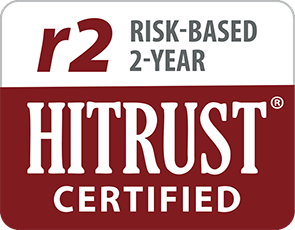Written by Ashley Kane,
Brightside Health
4 Minute Read
Advice from Dr. Mimi Winsberg on how to cope with the realities of shelter in place
An integral part of being a responsible adult is setting boundaries. Boundaries are the structure in which we communicate our personal limitations, both with ourselves and others. They keep us safe and healthy and keep our lives running smoothly. Everyone’s boundaries are unique and reflect our individual needs and priorities. Boundaries make life predictable and offer a sense of security. However, in the wake of the COVID-19 pandemic, life can feel anything but predictable.
Psychologists use the term “avoidant coping mechanisms” to describe behaviors we use to distract ourselves and minimize stressful situations. These (often destructive) behaviors can include obsessing over the news, eating junk food, and drinking excessively. Uncertainty is uncomfortable, and right now, we’re doing all we can to distract ourselves from the current reality.
To combat these often destructive behaviors, establishing structure and boundaries is essential––both with yourself and those with whom you are quarantining.
According to our Chief Medical Officer, Dr. Mimi Winsberg, “Structure provides us with a sense of security. The reassurance of a predictable routine calms nerves subconsciously. Boundaries will establish balance and work to restore your happiness. Without structure or routine in place, it can be easy to lose sight of your purpose, self-discipline, and a sense of meaning and contribution.”
Here are some tips for creating structure and boundaries during the COVID-19 pandemic.
Creating work-life boundaries
In these trying times, the ability to work from home is a gift––but it does come with its fair share of challenges, too. Creating boundaries between your work life and your home life is especially challenging during this time, as the delicate equilibrium between the two has suddenly dissolved.
Staying in bed with your laptop might be a tempting thought, but we advise against it. Begin your day as you usually would by taking a shower, getting dressed in work attire (no pajamas!), and making yourself a healthy breakfast. If possible, establish a makeshift home office or working station. For tight quarters, a standing desk has a smaller footprint than a regular desk and is healthier, too! When you’re done with work for the day, close your laptop screen and shut the door behind you. The physical act of closing off your workspace will help your brain distinguish between working hours and non-working hours.
Practice by waking at the same time each morning and going to bed at the same time each night. Try to follow the same routine for eating times, exercise, and chores. Don’t forget to factor in time for the other essentials like relaxing, therapy appointments, and creative activities. Blocking off time in your calendar (much like you do for meetings at work) might be helpful to keep you on track throughout the day.
Creating interpersonal boundaries
Creating structure is also essential for your interpersonal relationships. The quarantine and isolation we’re facing will put stress on home life and relationships. If you find yourself spending a little too much time with your housemate, spouse, or children, here are some ways to create psychological and physical space at home.
- Go into another room and close the door. Tape a sign on the door so inquisitive children or roommates know to give you some space.
- Try noise-canceling headphones.
- Take a walk outside, if possible.
- Set your phone and other devices to airplane mode or ‘Do Not Disturb.’
As with everything, communication is the key. Communicate your boundaries to those that you’re quarantining with, and be respectful of their boundaries as well. Have a discussion with your housemates about work schedules, and let them know if you need space and quiet during work or personal hours. For those quarantining with children, create a new daily plan that clearly outlines your family’s morning routine, school work, daily tasks, and family time.
We’re all spending more time with each other and have less freedom. How we choose to deal with that is up to us. Perhaps the silver lining in all of this madness is the opportunity to connect more deeply with loved ones. Whether that’s a daily FaceTime or doing a puzzle after dinner, this new way of life may bring you closer together. For more tips on managing your mental health during COVID-19, check out our blog post COVID-19 and Your Mental Health: What You Need to Know.













